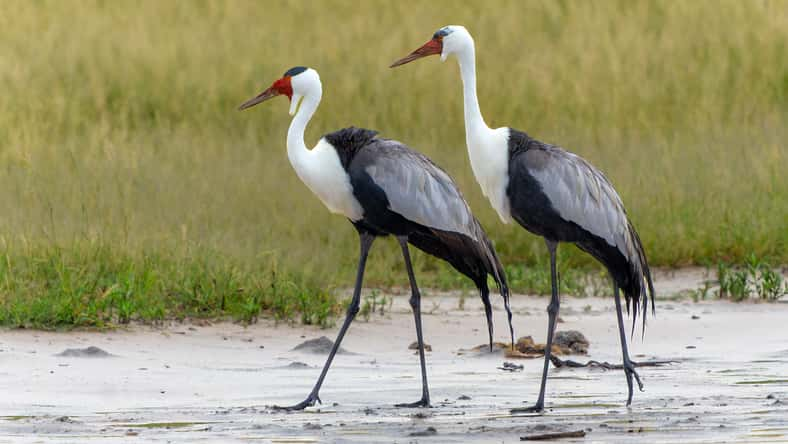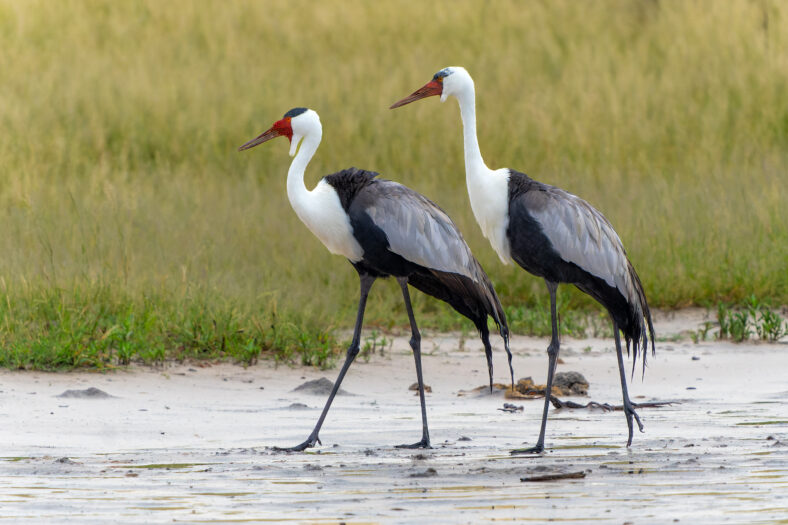Wattled Cranes Are No Longer Critically Endangered, Even Though There Were As Few As 188 Left

There are 15 species of cranes found across the globe, and four of those reside in Africa. In South Africa, the wattled crane, in particular, was in decline. But now, the population thankfully seems to have taken a turn for the better.
In 2000, their numbers were at 188 but have risen to 304 today. Recently, their status was changed from critically endangered to just endangered on the International Union for the Conservation of Nature’s list of threatened species.
Wattled cranes are the largest species of crane in Africa. Only about 9,600 remain in Botswana, Angola, Zambia, the Democratic Republic of Congo, South Africa, Ethiopia, Zimbabwe, and Tanzania.
The birds grow up to six feet tall and have elegant, majestic feathers in striking colors. They are estimated to live for about 30 years in the wild. When mating, they practice special rituals that involve bowing, jumping, and dancing.
Their population has increased due to various factors. For one, they have gained more breeding areas. There were just 70 breeding territories in 1999. Today, there are 84 in the province of KwaZulu-Natal.
Researchers used annual aerial surveys to count the cranes. A total of 188 individual birds existed in KwaZulu-Natal in 2000. By 2005, the population in South Africa had increased to 242 birds. By 2024, there were 304 birds.
Wattled cranes primarily live in floodplains. The ones that live in South Africa frequent the foothills of the Drakensberg mountain range, where plenty of drinking water can be found.
The wetlands in the area make up between 10 and 40 percent of their breeding territory, while the grasslands make up about 20 to 80 percent of their nesting territory. Wattled cranes eat water lilies, water insects, snails, and frogs from the wetlands.
Wetlands provide enough food for chicks to grow an inch per week after hatching. They start flying when they’re several weeks old. Before then, they stay in the wetlands to avoid being eaten by predators.

Sign up for Chip Chick’s newsletter and get stories like this delivered to your inbox.
To cranes, wetlands are a safe haven and essential to survival. But to humans, wetlands are smelly, muddy, damp, and dirty.
In the 1970s, 50 percent of South Africa’s wetlands were drained and turned into commercial agricultural lands. This is part of the reason why wattled cranes were critically endangered.
Getting rid of wetlands is also detrimental to rural villages and other communities that do not have access to drinking water.
Because there are less than 400 wattled cranes in KwaZulu-Natal, they are vulnerable to disease, which would put the entire species at risk of extinction in South Africa.
In order to further protect the wattled crane population, wetlands need to be restored so the birds can return to their habitats and continue breeding.
More About:Animals





